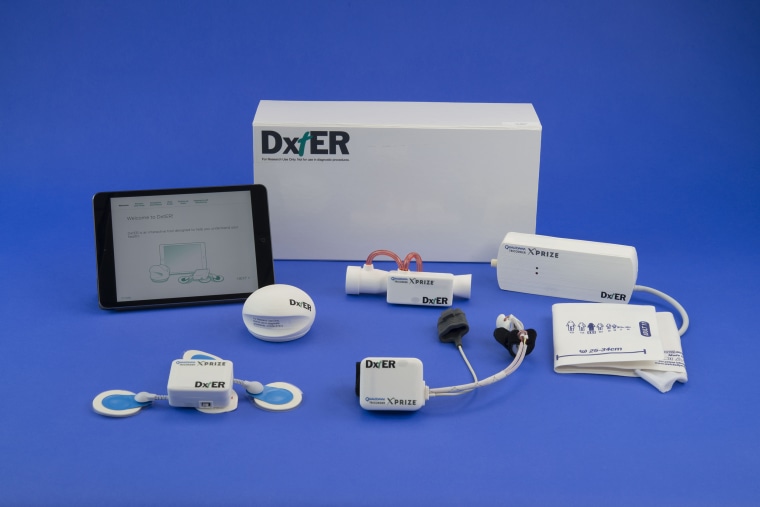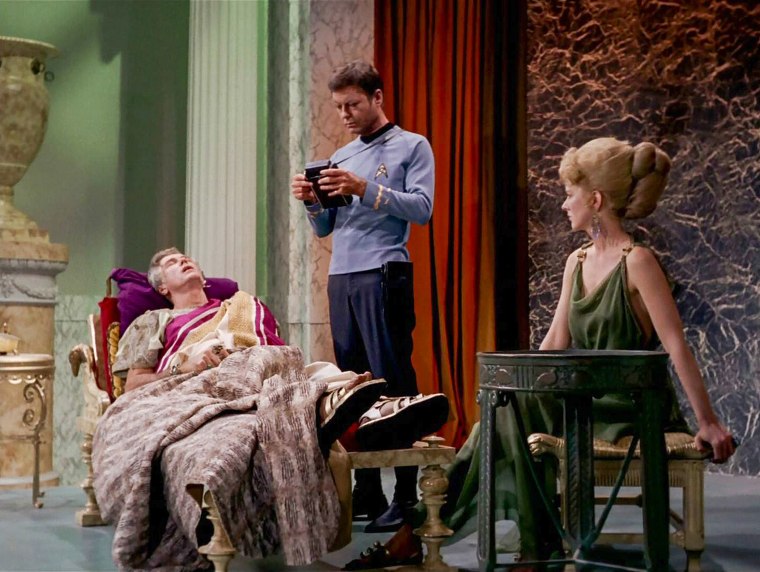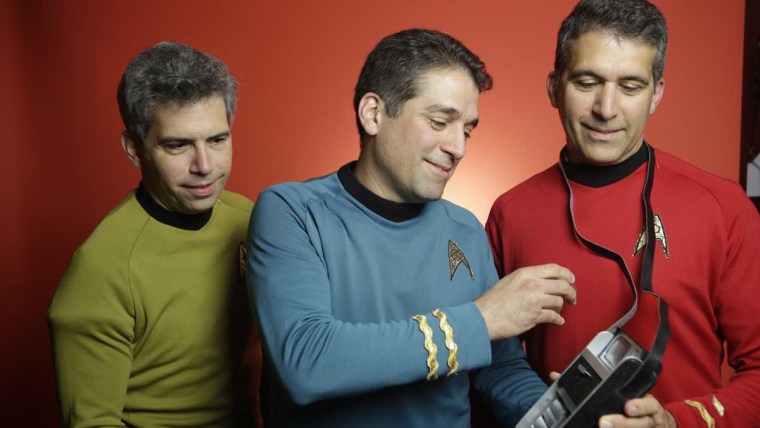The original 1960s Star Trek series took place in a universe of the future with personal communicators, holograms, and the technology to send humans beyond our solar system. In many ways that future is here. We have smartphones, virtual reality, space travel — and now the tricorder.
In the show, the tricorder was a handheld medical device that could scan a patient, read his or her vital signs, and diagnose problems in minutes. A working prototype invented by a Philadelphia-based emergency room physician Basil Harris may not look like the ones used by Dr. Leonard “Bones” McCoy and Commander Beverly Crusher throughout the sci-fi series, but it’s advanced enough to offer a medical diagnosis in minutes and anyone can use it.
Related: This Revolutionary Gene-Editing Tool Could Change the World
The device — which won top honors during the Qualcomm Tricorder XPRIZE competition — still needs to undergo more testing and receive regulatory approval before it’s available to consumers. But Harris said that may happen in just a few years and he’s aiming to keep the price around $200.
“It’s doing exactly what I do in the ER,” Harris explains. It starts by continuously monitoring a patient's vital signs and then asks questions through its smartphone or tablet app to better understand the symptoms. “It uses all of that objective information together in the way your doctor would to come up with a diagnosis.”
Out of the box, DxtER looks like a medical kit with an orb-shaped digital stethoscope, an EKG sensor that sticks to your chest, a spirometer to measure lung function, and a finger probe that non-invasively measures glucose, white blood cell count, and other blood tests.

The device's app explains how to use each of the sensors and once attached those sensors send the patient's vital signs to the app for diagnosis. And similar to the tricorder in the shows, the device can diagnose a variety of problems including pneumonia, sleep apnea, diabetes, a UTI, and 30 other conditions.
“It’s really like a complete office visit in a 5-pound box,” Harris says.
He and a team of doctors and engineers have been working on DxtER since 2012. As part of winning April's XPRIZE competition, the team received a $2.6 million to help get the needed regulatory approvals and take the next steps to produce and market the device.
Related: Algorithms Learn From Us, and We Can Be Better Teachers
The capabilities of these devices could dramatically change everyday life for a lot of people, says Grant Campany, project lead for the Tricorder XPRIZE competition.
"[For individuals with chronic dieseases] who have a hard time even getting into the hospital, being able to manage their care from their home is a profound improvement,” Campany says. “Anything we can do to keep people healthy and not at the hospital translates into economic benefit, too.”
In rural areas where communities don’t have access to healthcare facilities, devices like these could have a big impact on the quality of care available, Campany adds. “The opportunity is just completely transformational.”
Harris predicts people will soon use personal medical tricorder devices at home — and that tricorders will play a big role in the future of healthcare.

Making Healthcare Smarter
DxtER is able to analyze and record symptoms as soon as patients first start having them, Harris explains, which means faster and better care.
“Acute ailments could be diagnosed and managed from home — or with improved, focused access in medical facilities," he says. "Many chronic conditions could be better managed, keeping people healthy and out of hospitals."
“It’s really like a complete office visit in a 5-pound box."
Imagine you have a 3-year-old daughter who wakes up Saturday morning with a phlegmy cough and slight fever. You suspect it’s more than a cold, but your pediatrician’s office is closed until Monday. DxtER could quickly tell you whether she has pneumonia and needs to be taken to a 24-hour clinic — or whether she just needs rest, Harris explains.
Or if your aging father who has chronic obstructive pulmonary disorder (COPD) one day seems to be more worn out than usual, DxtER could record his vital signs and help decide whether he should go to the emergency room. And if you go to the ER, data from the tricorder will help the doctor better understand the symptoms to decide what care your father needs.
“Five years from now when someone comes into my ER with their tricorder device — whether it’s ours or another one — I want to be able to believe that data and take the next step,” Harris says. The goal is for DxtER to make it easier to deliver higher quality care to more people more efficiently.
The artificial intelligence algorithms DxtER uses to diagnose conditions were based on Harris’ 12 years of clinical experience as an ER doctor. His team also ran several chart review studies during which they compared DxtER’s evaluation of real patient data with the diagnoses those patients received. That data allowed the team to refine the algorithms for DxtER’s AI.
The complete DxtER prototype was tested by XPRIZE for the competition (along with other entries) in a lab at the University of California San Diego.
“I think we’re going to see a lot of evolution and transformation over the next three to five years,” Campany says. The ways we collect health data have transformed over the last decade, making a real tricorder possible, reliable, and affordable, he adds.
Related: The Quest to Create Artificial Blood May Soon Be Over
Another team in the competition, Dynamical Biomarkers Group out of China, plans to market their tricorder device for use in its country's rural villages to facilitate better care where it isn’t available.
The next step for Harris’ team is getting FDA approval for each component of DxtER and then approval of the complete device. They are in the process of launching a trial to validate the safety and effectiveness of DxtER’s finger probe as a non-invasive glucose sensor, hemoglobin sensor, and white blood cell count sensor.
That component alone could dramatically change how people with diabetes manage their condition, Harris says, “saving them from the hassle and pain of multiple finger sticks a day.”
The Power Relies on the Data
Others share Harris’ and Campany’s optimism for tricorder technology, but say the changes won't happen overnight.
“This technology could potentially gain more power when we are able to collect huge amounts of data,” says Dr. Gene Fridman, assistant professor of biomedical engineering at Johns Hopkins University School of Medicine, who was not involved in developing DxtER or in the XPRIZE competition (but has invented the “MouthLab” device, which uses AI to test a person’s vital signs via a small mouthpiece and thumb sensor).
Tricorders won't replace doctors, Friedman says. But the more data they gather and the better the AI is able to predict and diagnose ailments, the more these devices will help individuals at home make smarter decisions about when to get care, which ultimately leads to more efficient and less expensive care overall.
By Friedman's estimates, “in the next 10 to 20 years it’s going to be a big revolution in personal healthcare."
